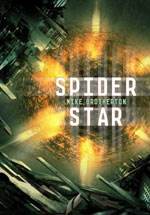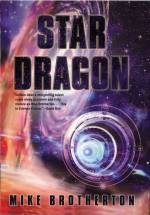Search
What’s an Astronomy Meeting Like Anyway?
August 9th, 2009
So I’ve been talking about being at the International Astronomical Union’s General Assembly in Rio, and mentioned a few things in a Living in Brazil post, but thought I’d say a few things more general about attending an astronomy meeting.
Every one is a little different, similar to the way that every science fiction convention is a little different, but there are a lot of standard things that everyone comes to expect, at least at a big meeting.
Big meetings like the IAU General Assembly (2000 people attending) have multiple smaller meetings as a part of them, and are often held in convention centers or large hotels. Programming tracks, if you will. There are scheduled talks that are generally given in association with a powerpoint presentation, very tight time control, and a short Q&A period. These are usually in packed rooms, and people tend to be pretty formal. There are rarely if ever anything like panels you might see at a science fiction convention — everyone attending has some expertise, wants to learn some things, and wants information presented rather than discussed. Sometimes discussions are planned, and they’re good when they work, but having 100+ people have a single discussions never works anywhere very well.
When you have so many people attending a meeting, there is never enough time for everyone to speak. Usually there is a committee of experts that decides who to invite to give longer review talks, recognized experts in various subfields, and then sifts through the other requests to speak to choose contributed talks, often given shorter timeslots.
Everyone is usually allowed to present. Since astronomers usually spend grant money to attend meetings, it’s always good to be able to claim a presentation to justify the travel expense. The overflow is handled by “poster sessions,” or what I think of as science fair for adults.
Basically there’s a large space, the main exhibition hall of the convention center often times, in which everyone gets to hang up their posters on display boards. These days these are often 3×4 feet full color jobs done up at Kinko’s or someplace similar. In the old days, they were sometimes handmade (as were the transparencies used for talks, AKA “oral contributions”). The posters stay up during the meeting and there is often time set aside just for them, often in conjunction with a coffee break.
In practice, everyone eats snacks, drinks coffee, and chats a lot. You usually have to find opportunities to drag people over to your poster. There are a lot of websites out there that give guidelines for how to make a good poster. I have my own ideas, and try to do a bit of advertising rather than complete an entire paper that no one is going to read in detail at a coffee break. If you’re interested, you can see the poster I did for an American Astronomical Society meeting in St. Louis last summer, which I made with powerpoint. Sorry, just that one file format for now.
Like many conventions, the real meat of the meeting is seeing old friends and collaborators, and talking science at bars or restaurants. Real collaborations do develop at these meetings, and people job hunting use them to network and find leads, and it does work. It’s not the most efficient way to transfer information, but it’s a fun way and a lot of good things happen that would never happen without putting everyone together face to face. Even in the internet age, it’s still a good thing to have, these live face-to-face meetings.
Also like conventions, things change a lot depending on your professional experience. You start off young, not knowing anyone, and are usually excited to see and meet people you know only by reputation. You end up comfortable and experiences, with lots of friends (I hope for everyone’s sakes!), and interacting with your collaborators or other individual scientists becomes more important than seeing every single talk and taking notes.
There are also usually exhibitor booths (similar to a dealer’s room at a convention). Sometimes these are book sellers, but more often any company or institution important in the astronomical community that wants to make their presence known. Observatories, informational websites, journals, and others have people available to talk to about what they do. It’s not always for profit. Sometimes it’s just about community building and providing services, which helps them justify their funding and be appreciated by astronomers.
So, an astronomy meeting has a lot of things in common with a science fiction convention in broad strokes, but quite a lot of things are very different in detail.
You can follow any responses to this entry through the RSS 2.0 feed. You can leave a response, or trackback from your own site.


I’m surprised there could be so many astronomers at one place. As a profession, how many astronomers are there worldwide? (I just checked, the IAU has 9259 individuals members.) That boggles my mind that so many people are studying the sky. I wished I could have been an astronomer. As a kid, astronomer was third behind science fiction writer and rock star, when thinking about what I wanted to do when I grew up. It was going to be my practical career choice. Sadly, I didn’t have the academic discipline. Ah well, maybe in another lifetime.
Yeah, it’s on order of 10,000. US probably has that many alone, and it’s probably a factor of two higher total. Depends on who you count. Only PhDs, only people holding jobs, everyone trained including students. Amateurs probably outnumber pros.
My list included paleontologist, astronomer, science fiction writer, computer (game) programmer, comic book or fine artist, electrical engineer. Hit a couple of those, trained seriously in a couple of others.
It’s funny. I think we’re always where we are now, but also always looking forward to what we want to do when we grow up. I’m always trying to do both, and hope I never totally settle for the status quo.